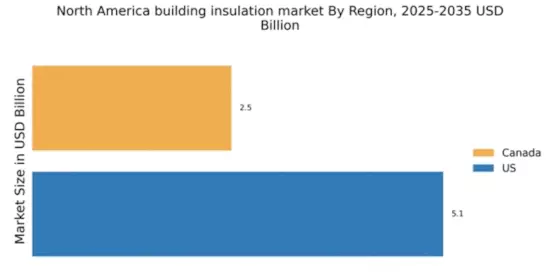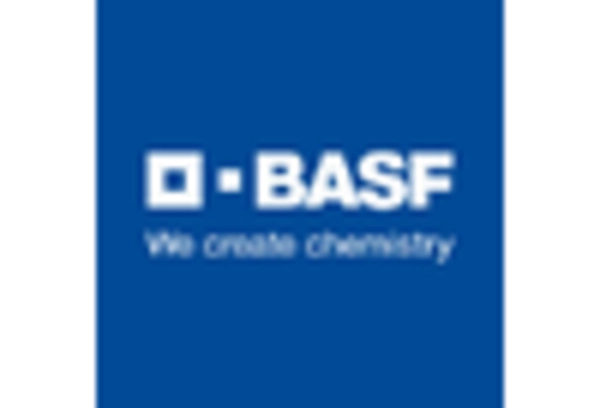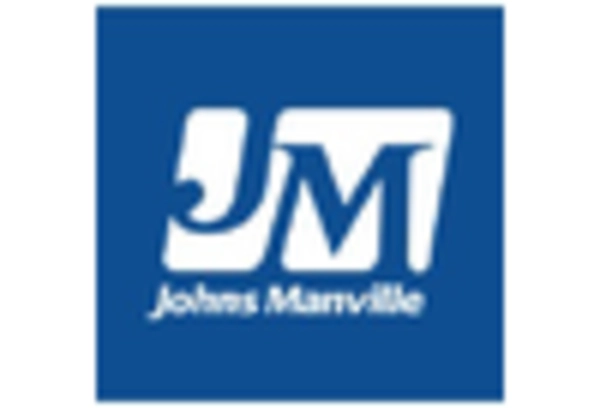Energy Efficiency Initiatives
The growing emphasis on energy efficiency in North America is a pivotal driver for the building insulation-material market. Government programs and incentives aimed at reducing energy consumption have led to increased demand for high-performance insulation materials. For instance, the U.S. Department of Energy has set ambitious targets for energy savings, which could potentially lead to a market growth of approximately 15% by 2027. This focus on energy efficiency not only helps in lowering utility bills for consumers but also aligns with broader environmental goals. Consequently, manufacturers are increasingly investing in advanced insulation technologies that enhance thermal performance, thereby propelling the building insulation-material market forward.
Rising Construction Activities
The resurgence of construction activities across North America significantly influences the building insulation-material market. With urbanization and population growth, the demand for residential and commercial buildings is on the rise. According to recent data, the construction sector is projected to grow at a CAGR of 4.5% through 2026, which directly correlates with the increased need for effective insulation solutions. Builders are increasingly recognizing the importance of insulation in achieving energy efficiency and comfort in new structures. This trend is likely to drive the adoption of innovative insulation materials, thereby enhancing the overall market landscape.
Consumer Awareness and Preferences
There is a notable shift in consumer awareness regarding the benefits of insulation, which serves as a crucial driver for the building insulation-material market. Homeowners and builders are becoming more informed about the advantages of high-quality insulation, including energy savings and improved indoor air quality. Surveys indicate that approximately 70% of consumers prioritize energy-efficient products when making purchasing decisions. This growing preference is prompting manufacturers to develop and market insulation materials that not only meet performance standards but also align with consumer values. As a result, the building insulation-material market is likely to experience a surge in demand as consumers seek sustainable and efficient solutions.
Regulatory Standards and Building Codes
Regulatory standards and building codes are critical drivers for the building insulation-material market. In North America, stringent regulations aimed at improving energy efficiency in buildings are being implemented at both federal and state levels. These regulations often mandate the use of specific insulation materials that meet defined performance criteria. For instance, the International Energy Conservation Code (IECC) sets forth guidelines that influence insulation requirements in new constructions. Compliance with these codes not only ensures energy efficiency but also enhances the market for insulation materials that meet or exceed these standards. As regulations continue to evolve, the building insulation-material market is likely to adapt, fostering innovation and growth.
Technological Advancements in Insulation
Technological advancements play a significant role in shaping the building insulation-material market. Innovations in material science have led to the development of advanced insulation products that offer superior thermal performance and ease of installation. For example, the introduction of aerogel and vacuum insulation panels has revolutionized the market by providing high insulation values in thinner profiles. These advancements are expected to drive market growth, with projections indicating a potential increase in market size by 20% over the next five years. As manufacturers continue to invest in research and development, the building insulation-material market is poised for transformation, offering enhanced solutions to meet evolving consumer needs.


















Leave a Comment